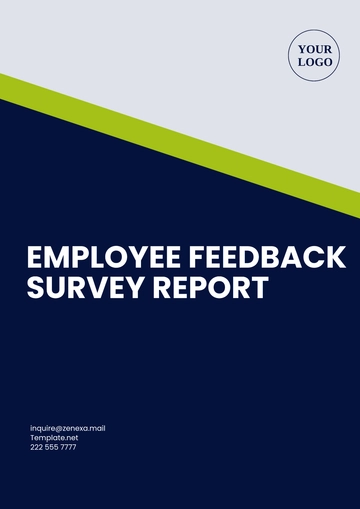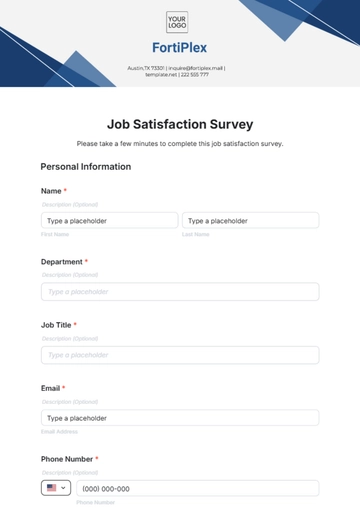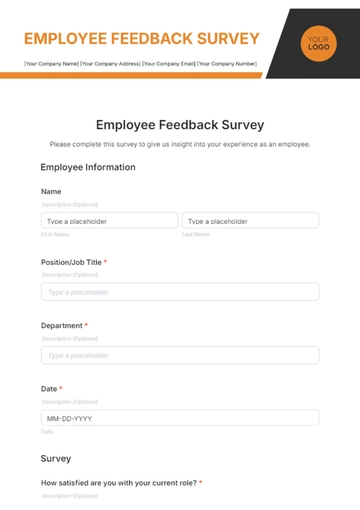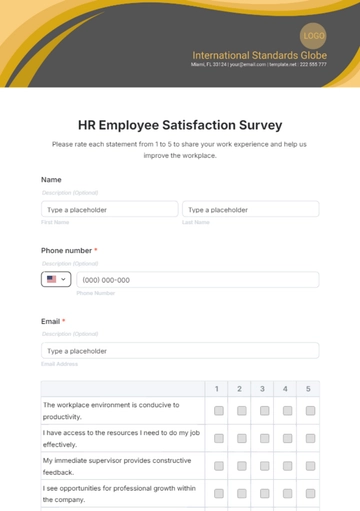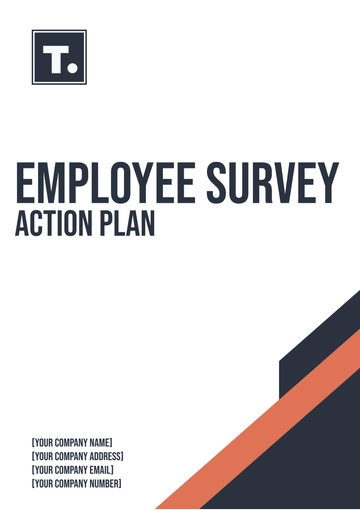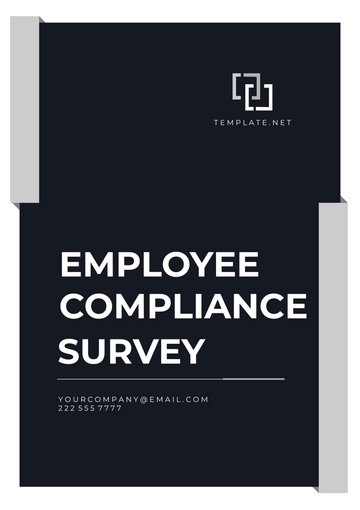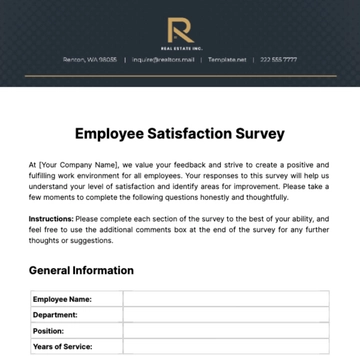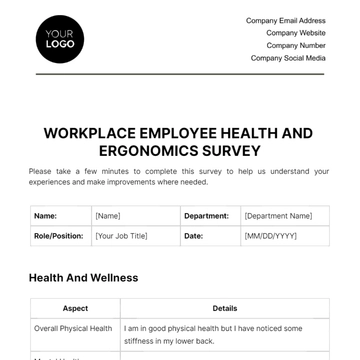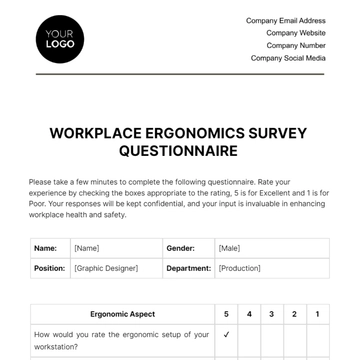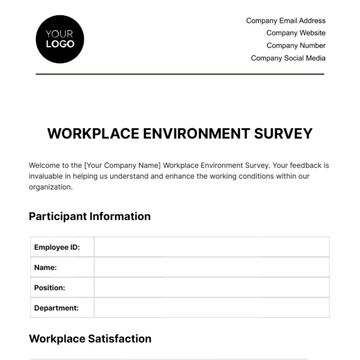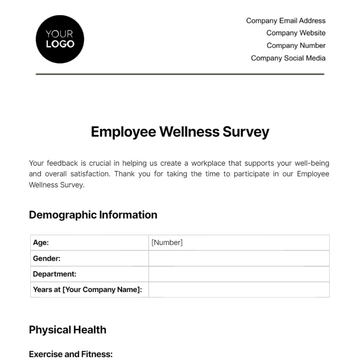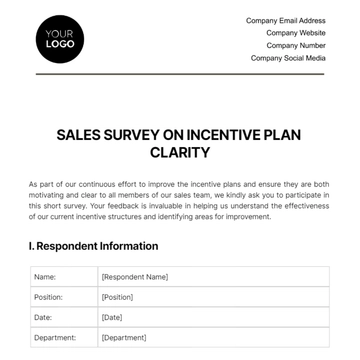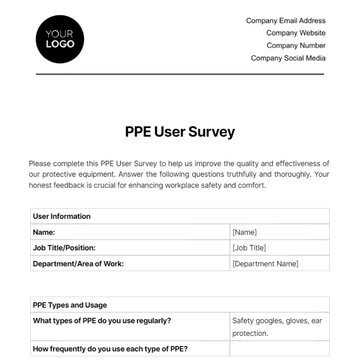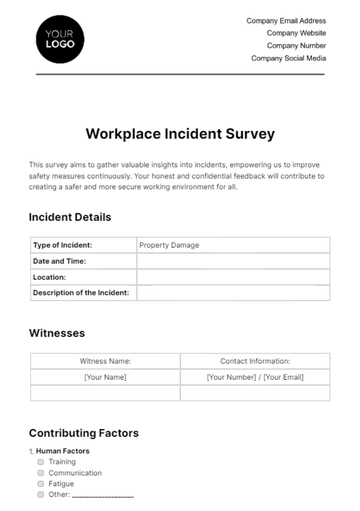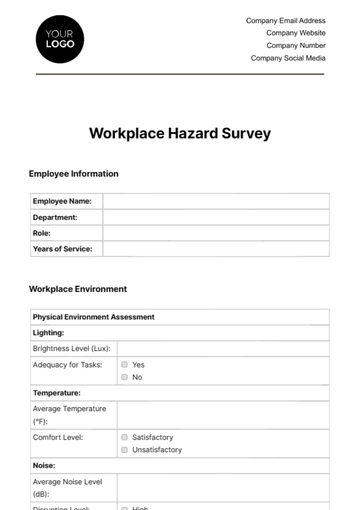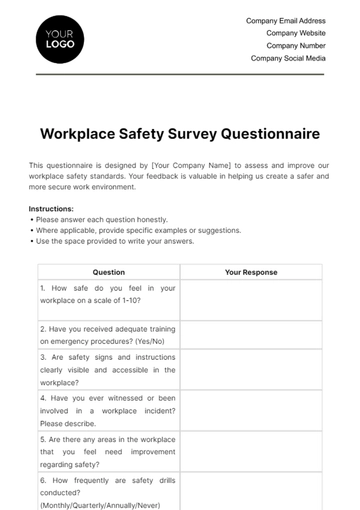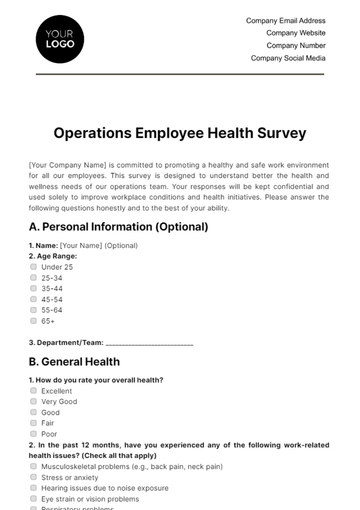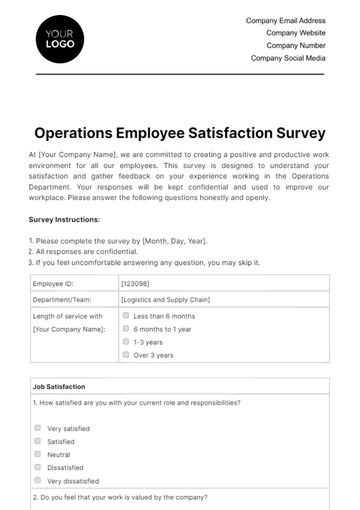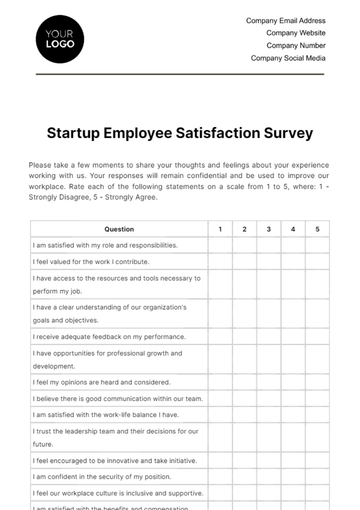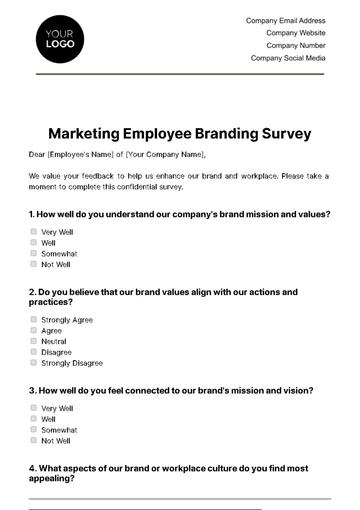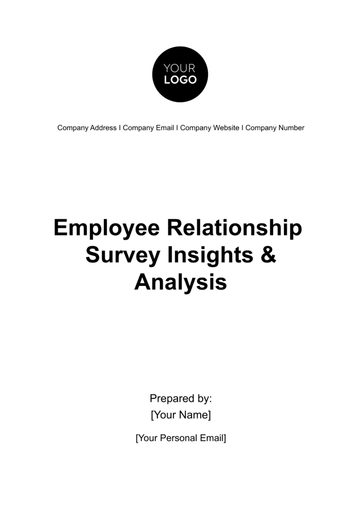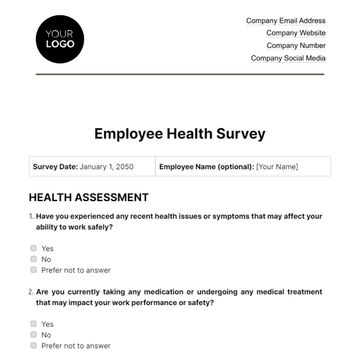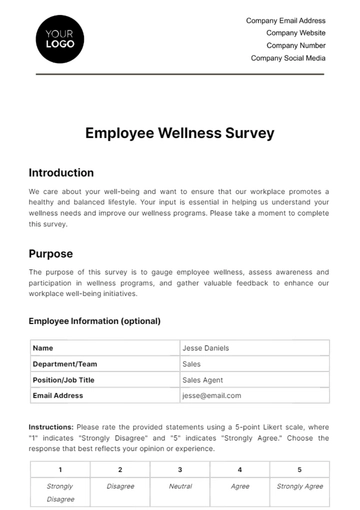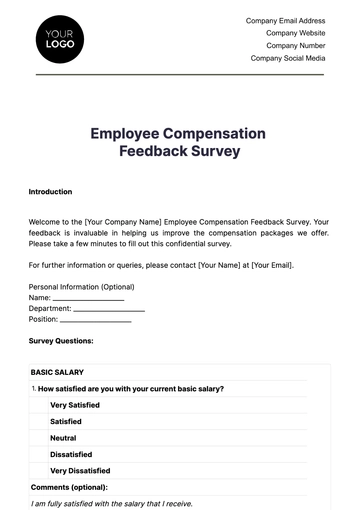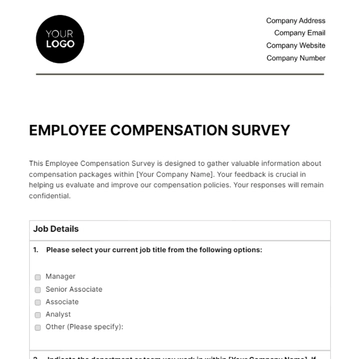Free Employee Compliance Survey
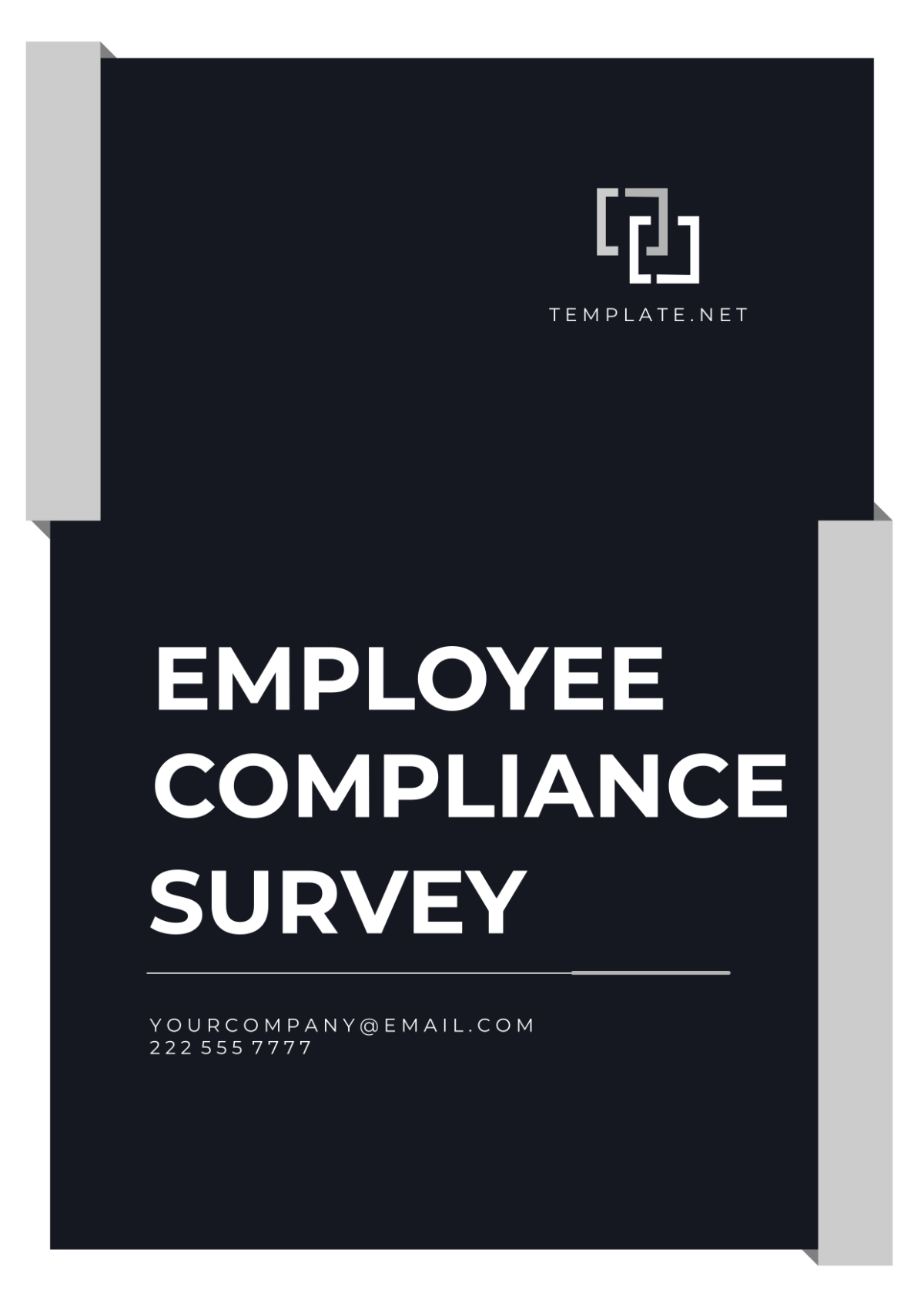
I. Introduction
[Your Company Name] is committed to ensuring compliance with all relevant laws, regulations, and internal policies. The Employee Compliance Survey is designed to assess employees' understanding of compliance requirements and identify areas for improvement.
II. Survey Preparation
II.I Define Objectives
Identify the purpose of the survey.
Determine the key compliance areas to assess.
Establish measurable goals for survey outcomes.
II.II Identify Participants
Compile a list of employees to participate in the survey.
Ensure representation from various departments and levels of the organization.
II.III Choose Survey Methodology
Decide on the survey format:
Online questionnaire through the company intranet.
Select appropriate survey tools or platforms.
Establish a timeline for survey administration.
III. Survey Content
III.I Compliance Knowledge
[Your Company Name]'s Code of Conduct
Applicable laws and regulations:
Familiarity with GDPR, HIPAA, and FCPA regulations.
Policies and procedures related to:
Confidentiality
Data privacy
Anti-discrimination
Conflict of interest
Intellectual property
III.II Reporting Procedures
How to report compliance concerns or violations
Whistleblower protection policies
Contact information for compliance officers or designated individuals
III.III Training and Education
Completion of mandatory compliance training
Participation in ongoing education initiatives
Awareness of available resources:
Access to compliance manuals, online courses, and training materials.
IV. Survey Administration
IV.I Communicate Survey Details
Distribute information about the survey purpose, process, and timeline.
Encourage participation and emphasize confidentiality.
IV.II Collect Responses
Ensure accessibility of the survey to all participants.
Monitor response rates and follow up with non-respondents if necessary.
Maintain confidentiality of survey responses.
V. Survey Analysis
V.I Data Compilation
Gather survey responses into a centralized database or platform.
Sort responses by compliance areas and demographics if applicable.
V.II Analysis and Interpretation
Identify trends, patterns, and areas of strength or concern.
Compare current results with previous surveys or benchmarks.
Generate reports summarizing survey findings.
VI. Action Planning
VI.I Identify Improvement Opportunities
Review survey results to pinpoint specific compliance gaps or challenges.
Solicit feedback from employees on potential solutions or initiatives.
VI.II Develop Action Plan
Establish clear objectives for addressing identified issues.
Assign responsibilities and deadlines to relevant stakeholders.
Determine resources required for implementation.
VI.III Communication and Implementation
Communicate action plan details to employees and relevant stakeholders.
Provide training or support as needed to facilitate implementation.
Monitor progress and adjust strategies as necessary.
VII. Evaluation and Follow-Up
VII.I Measure Effectiveness
Evaluate how implemented initiatives affect compliance culture and behavior.
Monitor key performance indicators related to compliance.
B. Solicit Feedback
Gather input from employees on the effectiveness of implemented measures.
Identify any new compliance challenges or emerging issues.
C. Continuous Improvement
Incorporate feedback and lessons learned into future compliance initiatives.
Regularly update the Employee Compliance Survey based on changing needs and priorities.
VIII. Conclusion
The Employee Compliance Survey is a vital tool for [Your Company Name] to uphold its commitment to compliance excellence.
Continuous evaluation and improvement are essential for maintaining a strong compliance culture and minimizing risks.
IX. Signature
We, the undersigned, acknowledge our commitment to promoting and upholding compliance standards at [Your Company Name]

[Your Name]
Compliance Officer
Date: [Date]
- 100% Customizable, free editor
- Access 1 Million+ Templates, photo’s & graphics
- Download or share as a template
- Click and replace photos, graphics, text, backgrounds
- Resize, crop, AI write & more
- Access advanced editor
Introducing the Employee Compliance Survey Template from Template.net – the ultimate solution for HR professionals. Crafted to streamline compliance assessments, this editable and customizable template ensures tailored surveys in minutes. With seamless integration into our Ai Editor Tool, effortlessly modify and personalize surveys to suit your unique needs. Simplify compliance management today with Template.net.
